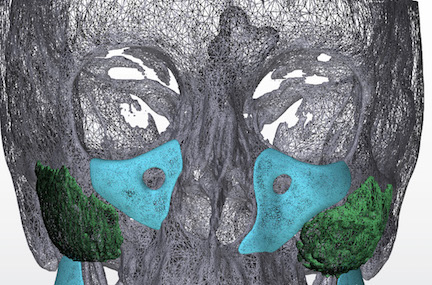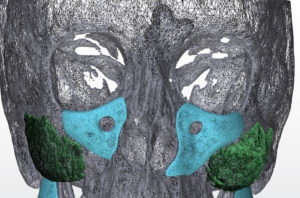Background: The traditional use of facial implants is based on the most common locations of aesthetic bony augmentation. This constitutes the design of standard implant shapes, most of which provide expansion of existing flat or convex bone contours. Few, if any, standard facial implants provide augmentation to an existing concave bone surface. This is because facial concavities consist largely of soft tissue thicknesses rather than that of bone.
While cheek implants provide augmentation to the curved surface of the zygoma an anterior arch, they can not designed to augment the concave surface of the maxilla or that of the infraorbital rim. Cheek implants can certainly be pressed into service in this area (no pun intended) but such an effect is far from ideal.
Historically non-standard facial areas of augmentation were done by using standard implants in a modified fashion or using implant blocks or sheets cut to shape. While these older techniques may still be occasionally useful, contemporary custom implant design technology can replace all of these older facial techniques for challenging unconventional facial deformities.
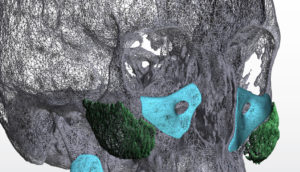
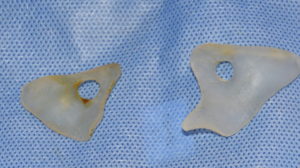
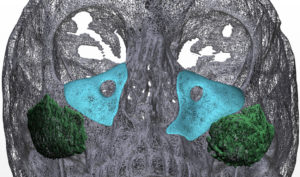
Linear scleroderma creates a variety of soft tissue and bony defects that typically emanate around one of the branches of the trigeminal nerve. Augmenting these type of midface defects is often best done with a custom implant design.
Case Highlights:
1) Standard cheek implants do not provide augmentation to the more anterior midface.
2) Custom infraorbital-maxillary implants cover the anterior midface and are often used to camouflage soft tissue deficiencies.
3) Inserted through an intraoral approach they can be placed under existing cheek implants.
Dr. Barry Eppley
Indianapolis, Indiana

